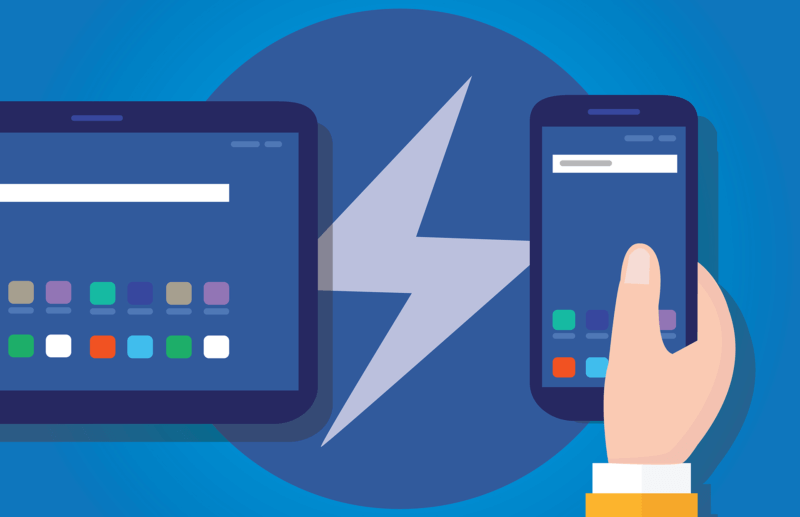
While it’s critical for advertisers to measure and track the traffic driven from their ads, there’s always been something of a tradeoff because the technical processes involved could slow down page-loading time. Now, with this week’s parallel tracking announcement, this tradeoff may no longer be a factor for AdWords advertisers.
If your AdWords account leverages click measurement redirect servers (i.e., uses the “Tracking URL” field in AdWords), then this new feature provides a way to reduce the amount of time it takes for an ad click to reach your landing page. This can improve your user’s landing-page experience. And landing page experience is an important factor in Quality Score, which, of course, affects your CPCs and ad rank.
The change will be especially welcome for advertisers targeting mobile devices and using mobile landing pages, since loading speed is such a critical factor on mobile. For example, when I wrote about AdWords and AMP back in May of 2017, it wasn’t clear how advertisers could achieve sub-one-second page loads if the ad click had to pass through one or more click measurement redirects. With parallel tracking, the final technical barrier to fully implementing AMP has fallen.
So, while this technical announcement might not seem all that interesting to the average marketer, this isn’t an opportunity to be casually ignored, especially if you already have (or plan to deploy) faster landing pages using AMP.
But more importantly, AdWords has announced that this opt-in feature will become required for all advertisers starting October 30, 2018. So every advertiser using redirect URLs will have to think about this at some point soon.
Primer: How ad click measurement works
When you use a click measurement redirect (either your own or one from a third-party technology provider), the person who clicks on your ad first has to be bounced through one or more redirect servers before their browser is able to even request the ad’s landing page.
Depending on how this is done, and how many redirects are used, this can add seconds to the user’s experience. And as I’ve mentioned before, seconds matter. Page load-time latency hurts the user’s landing-page experience, and as such can negatively impact your Quality Score.
This is why parallel tracking seems to add a lot of value to the advertiser and the user. Put simply, when parallel tracking is enabled, the person clicking the ad is taken immediately to your landing page. Boom! Meanwhile, all of those click measurement redirects are executed quietly in the background (For the geeks, this is done via this new web standard).
What does this mean for advertisers?
Since clicking on an AdWords ad will result in the browser issuing two parallel requests (one to the landing page and one to the ad click measurement server), it’s important that AdWords has a clear understanding of which URL parameters are needed to reach the landing page.
So, you should contact your click measurement provider(s) to determine what, if any, Final URL and Tracking URL tweaks may be required to ensure that the proper parameters continue to reach your landing pages. In addition, all click measurement URLs/requests will need to leverage encryption via HTTPS. So you or your click measurement provider may need to also update some tracking URLs to replace “HTTP” with “HTTPS.”
This last point is a boon for web surfers in general, as it provides them with an extra layer of data protection. And it’s well aligned with the HTTPS Everywhere movement, of which Google is a supporter. In fact, Google’s Chrome Browser recently announced that the company is taking steps to more strictly call out web pages that are not encrypted as “not secure.”
So, while adopting parallel tracking may require some extra work, the benefits may well be worth the effort.
What’s the downside? In Google’s help article, it’s strongly recommended that you first check with your measurement provider(s), since an incompatibility could cause your click measurement to stop working. That said, since AdWords already knows your landing page’s URL, people who click on your ad should always reach your landing page (meaning no 404s should one of your click measurement systems go down).
So what’s next?
Parallel tracking is currently an optional feature. But come October 30, it’s going to be required for all AdWords advertisers. And given that some AdWords accounts will need to do some URL tweaking, it would be wise to start talking with your click measurement providers today so you don’t wind up scrambling at the last minute to meet the October deadline.
And, in case it’s not obvious, early adopters of parallel tracking should benefit from having a relative speed improvement over those who choose to be late adopters. So there’s added incentive to look into this now.
Finally, now that AdWords has drawn a line in the sand and declared that all click measurement should be handled asynchronously, it’ll be interesting to see which other major ad platforms follow suit.
Opinions expressed in this article are those of the guest author and not necessarily Search Engine Land. Staff authors are listed here.
